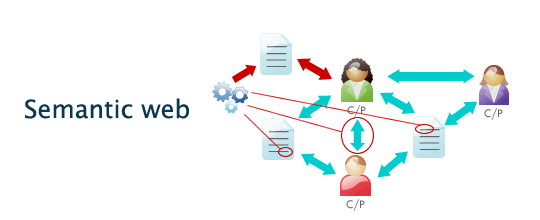Are You Prepared for the Semantic Net?
What will be the Semantic Web?
The Semantic World-wide-web can be a set of requirements developed by the w3C that permits internet site owners to embed all varieties of data in their subject material and organize the data with inference rules. To applications, the Internet can be a huge blob of unstructured data–mostly raw text. It is genuinely challenging for applications like investigation engines to make sense out of it all. For those who adopt it, the Semantic World-wide-web will add structure to the information so that applications can far better comprehend what to complete with all the content. This will enable extra automated World wide web processing, for example intelligent RSS feeds and far better research algorithms.
The promise I alluded to inside the podcast series was about setting up intelligent RSS feeds that automatically serve related articles to your audiences. Imagine being in a position to specify not only the search phrases at the center of your RSS feed aggregators, but all varieties of other knowledge, for example date, author, publisher, ratings, tags, etc. Suppose you created a feed of all Kristina Halvorson’s tweets just about a single facet of subject material method within the last two months, and you combined it on the same page with five other leading experts on content method that meet the identical parameters in the identical time frame. That may be the form of page where “set-it-and-forget-it” aggregation makes sense, to answer Mike’s question much more precisely. This kind of feed requires Semantic Internet functions.

Investigation may be the other area of net articles which will change radically when extra publishers allow Semantic Web standards including RDF and OWL. These requirements enable subject material owners not only to write subject material with the key terms their target audiences use, but also to disambiguate the meanings of those keywords. When look for engines parse this code, they can serve a lot more related written content to their users. Making use of entity extraction, Semantic Internet look for engines will likely be ready to assign the appropriate RDF information to pages whether they are coded appropriately or not. This is how the next generation of investigation engines will work.
As with research, most automated written content efforts center on keywords and phrases. Social media listening is one case in point. The keywords you feed into any listening program determine the nature of the results. It is a bit of a chicken-and-egg problem, mainly because you need to monitor social media to learn about the words your audience favors, but you need to know what words your audience favors to accurately monitor social media on their behalf. Also, employing search phrases alone, the research requirements human validation to ensure accuracy. Social media listening might be a lot much more accurate on first pass if it looks for Semantic World wide web data in addition to key phrases and links.
In this article, all I have been capable to complete is scratch the surface in this emerging field. But I wanted to give you a taste for it devoid of overwhelming you. The Net appears tricky sufficient as it’s without over complicating it. The very good news is, the Semantic World wide web ought to really simplify World-wide-web publishing by giving publishers more tools to assist their target audiences come across and use related content. Preparing for the Semantic Net requirements to be on your roadmap now.










